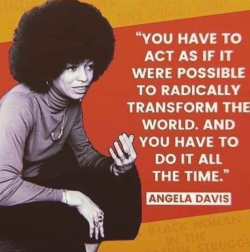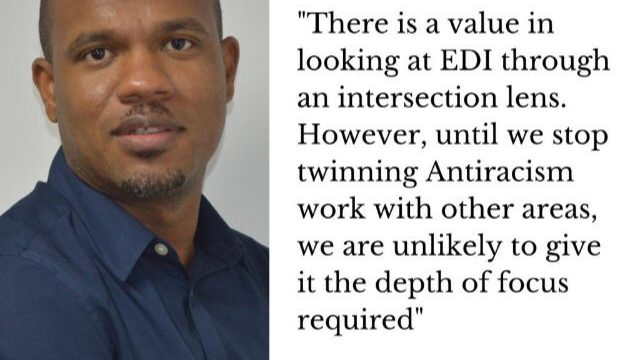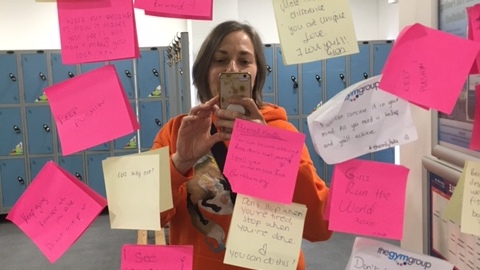What is the Political Impartiality Guidance for schools?
The Department for Education document entitled Guidance: Political Impartiality in Schools (hereby I will refer to this as the PIS) is an intriguing example of how guidance can be experienced as a coded diktat. The document is, as its name suggests, guidance. It does not, as its content, tone and how it gets operationalised seem to suggest, provide any new legal duties for schools, statutory or otherwise, regarding the freedom to teach issues which could be deemed sensitive, controversial or political. In fact, anything we teach can be, at some point, challenged by someone as any of these things – sensitive, controversial or political. As teachers, we do have a legal duty to endeavour to present a balanced view and to not explicitly promote partisan political views. However, what gets labelled as political is open to interpretation, and in recent years this can feel like it has been broadened to include anything which is not Conservative Party doctrine or even an individual politician’s own personal and partial beliefs – which happens quite often these days from a range of politicians on both sides who don’t seem able or willing to be united with their party on some issues.
The PIS document occasionally gets reissued, and this is not random. It was first reissued in February 2022, coinciding with schools’ growing publicly expressed interest in equipping young people to understand and question key issues which have an impact on our freedom as citizens and on equity for all. In the wake of the post-George Floyd international re-awakening to racism and the increasingly urgent clarion call to reduce global warming before it is too late, this re-issue covered climate change, decolonising the curriculum and racial equity; naming Black Lives Matter specifically as verboten. This was done through a series of ‘scenario’ illustrations, which could be seen as coincidental random examples or as a warning shot across the boughs of many schools that have taken steps to include antiracist practice and climate-change awareness into their ethos and operations. Following this re-issue, there were a number of schools that had previously freely published their commitment to antiracism and had used the slogan Black Lives Matter, where now in place of the webpage was an Error 404 message. Oops, this page does not exist!
The PIS document also included warning schools and school communities from using their citizen rights to protest or critique government policy through examples such as, it’s okay to put up posters that thank the NHS but not okay to put up posters which say ‘Save the NHS’. It is not surprising that to many it becomes such a minefield that they would rather steer clear of anything which is perceived as political. Especially if you are time-poor and low on confidence in a high stakes, high pressure sector such as education.
Critics of the guidance, including teaching unions such as the National Education Union (NEU), say that rather than clarifying existing legal duties for schools, each reissue adds “new layers of mystification and complexity” and introduces “obfuscation about what is and is not a ‘political’ issue”. You can see how the slippery slope of ambivalence created by a document which parades as giving clarity through prescriptive scenarios actually blurs in such a way that voicing concern, critique or opinion becomes seen as having the potential to be perceived as political, which then becomes understood as thereby concrete proof of politically partiality, and thus not only best avoided but forbidden.
Each time we experience a ‘day after moment’ we can expect the guidance to be updated and reissued. Lo and behold, the most recent re-issue of the guidance includes a new scenario regarding the situation in Israel-Palestine, which is referred to as a ‘conflict’ throughout and which pitches in Scenario G “A teacher finds a resource online designed to support teaching about the Israeli-Palestinian conflict, which is a political issue” (PIS, 2023). Here we see that any engagement with Israel-Palestine has been labelled squarely as political now can be read as: do not proceed, leave well alone, desist. The effect of this is that we cannot speak about any aspect of the situation in Gaza now because it sits in the ‘Political! do not touch!’ bucket.
When the PIS is operationalised
Many believe that teaching is a political act, should be liberatory and that in order to change reality we must learn to name reality. Therefore, we need our curriculum and pedagogy to ensure that children and staff are well-versed in critical thinking and understand their rights as citizens to challenge and critique policy and policy enactment at school, local and national levels, or wherever they see inequity being in operation in their orbit. And yet, there are a number of forces which are deployed to police schools and teachers around political impartiality which acts as a way of silencing.
Here three recent examples of things schools and teachers have been reprimanded for:
- Teaching about Greta Thunberg – a colleague shared that this was picked up during an Ofsted inspection, and the school was told that they should not be promoting contested views about climate change, nor celebrating the actions of a child who encourages other children to truant.
- Making white children feel guilty about Britain’s colonial past – Kemi Badenoch chose to warn teachers during Black History Month no less, that if they do anything to make white children feel guilty about colonialism, they would be breaking the law. In her speech she refers to not Critical Race Theory, but Political Race Theory just to really drive her point home.
- The impartiality guidance says we can say that racism is bad and unacceptable but anything else means that we are partisan. This means we cannot define what racism is, how it manifests or what it looks like. We are also bound by the guidance to always give the ‘other side’ so we are not allowed to promote anti-racism as fact or right – so are we meant to teach about the racial inferiority of Black and negatively racialised folk as an equally valid fact to counterbalance any teaching about antiracism? Or as the Sewell Report tried to have us believe – racism is an interpersonal issue of a few bad apples and structural racism cannot be found and therefore cannot be assumed as fact.
The impartiality guidance is reinforced and weaponised by many actors it seems. In these three examples we see Ofsted, individual politicians, and supposedly evidence-informed commission reports. (This is what I mean when I have been heard to say ‘beware the impartiality police’).
So how do we proceed?
It’s important to give some hope and some practical solutions rather than providing something that could be perceived as just a diatribe railing against the impartiality guidance. I want to draw on a useful conceptual framework called Days After Pedagogy, developed in the USA and which is deployed to centre perspectives of equity and justice in the days after major events, traumas and tragedies at local, state, national and international level.
The key principles are:
- A commitment to justice and equity
- Student-centred and humanising interactions and spaces
- Risk-taking
- Adaptability and flexibility
- Sociopolitical awareness
- Vulnerability
When teachers, curricula, schools work through these principles, they can:
- Resist silence in the face of oppression
- Refuse neutrality
- Reclaim voice and agency for themselves and their students
- Teach towards transformation
How can you use Days After Pedagogy to help you with the Israel-Palestine situation:
- Resist silence & refuse neutrality – Ask students what they think they know already and what they would like to know more about. Using Freire’s principle of encouraging problem posing not problem solving.
- Reclaim voice and agency for yourself and your students – group the ‘what we know’ and ‘what we want to know’ into clear themes and gather 10 distinct lines of enquiry. Form a working party with a remit, clear time and space to meet regularly, terms of engagement to ensure safety and care are prioritised but silencing is not an option, and start to research answers to the things we don’t know, and fact check assumptions we think we do know.
- Reassure the students that we are going to all learn and develop our understanding together over time. The situation is dynamic and so are we.
- Teach towards transformation – everyone will be transformed through this process.
Tell your students that together you will find answers, perspectives and ways of understanding based on what you have captured from them and that together, over a period of time, you will have a series of constructive and courageous conversations.
If we want balance, critical thinking and to prime our young people to be able to go deep, think wisely and feel hope, we need to model this and do it over time. Not one PSHE lesson, not shut it down completely, not a ‘write to your MP’ lesson.
The young are our future – we must believe in them and allow them to co-create the future in the present.
Sources and resources
What you need to know about political impartiality in schools (DfE pamphlet)
DfE Guidance: Political impartiality in schools
Political impartiality: Ten ways to sit on a fence
Schools in England told not to use material from anti-capitalist groups
Alyssa Hadley Dunn (18 Apr 2023): “Why did we never learn this?”:
preparing educators to teach for justice and equity on days after, International Journal of
Qualitative Studies in Education, DOI: 10.1080/09518398.2023.2181456
Paulo Freire Pedagogy of the Oppressed









